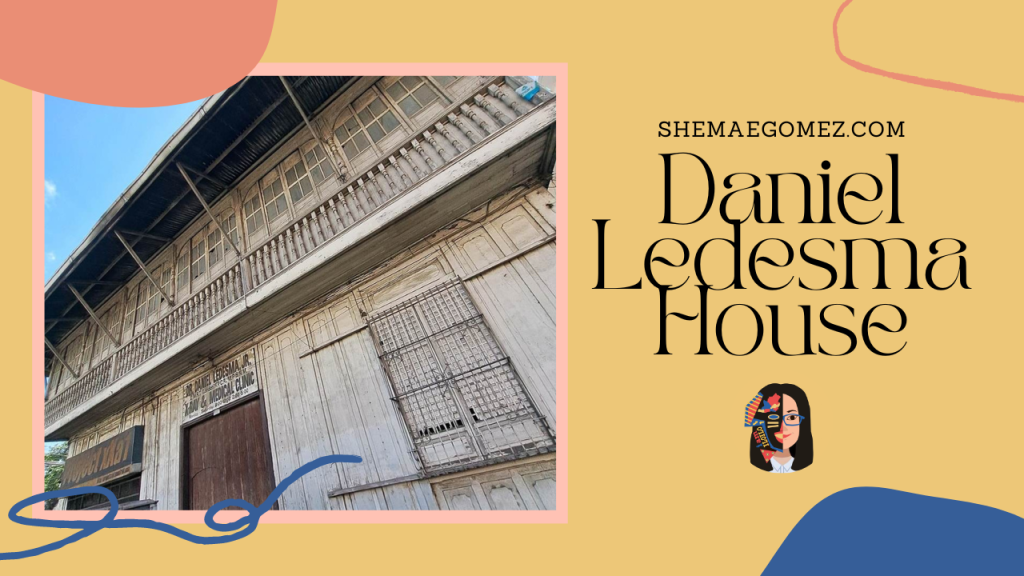The marker of Patrocino Gamboa is located inside Jaro Plaza or the Graciano Lopez Jaena Park. The marker is installed on the podium where her monument is standing.
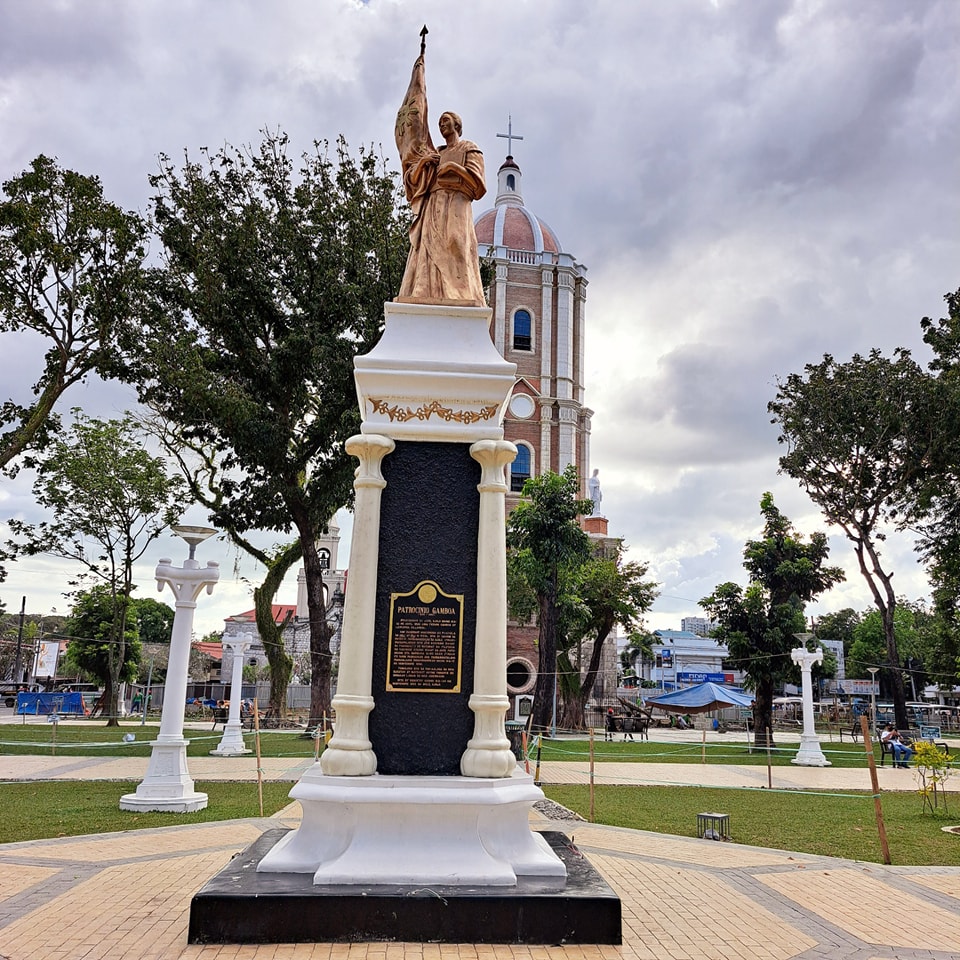
The marker reads:
PATROCINIO GAMBOA
(1865-1953)
IPINANGANAK SA JARO, ILOILO NOONG IKA- 30 NG ABRIL 1865 KINA FERMIN GAMBOA AT LEONARDA VILLAREAL.
MAY KAISIPANG MAKABAYAN NA PINASIGLA NG NOLI AT FILI NI RIZAL. SIYA AY UMANIB SA PANGKAT PANGHIMAGSIKAN SA ILOILO. IPINAKI- PAGSAPALARAN NIYA ANG KANYANG BUHAY SA PAGHAHATID NG WATAWAT NG PILIPINAS NA KANYANG GINAWA BUHAT SA JARO PATU- NGONG STA. BARBARA KUNG SAAN ITINAAS ITO NANG PASINAYAAN ANG PANSAMANTALANG PAMAHALAANG PANGHIMAGSIKAN NOONG IKA-17 NG NOBYEMBRE 1898.
TUMULONG SIYA SA PAG-AALAGA SA MGA SUGATAN AT MAYSAKIT NOONG PANAHON NG DIGMAAN LABAN SA MGA AMERIKANO.
SIYA AY NAMATAY NOONG IKA-24 NG NOBYEMBRE 1953 SA MOLO, ILOILO.
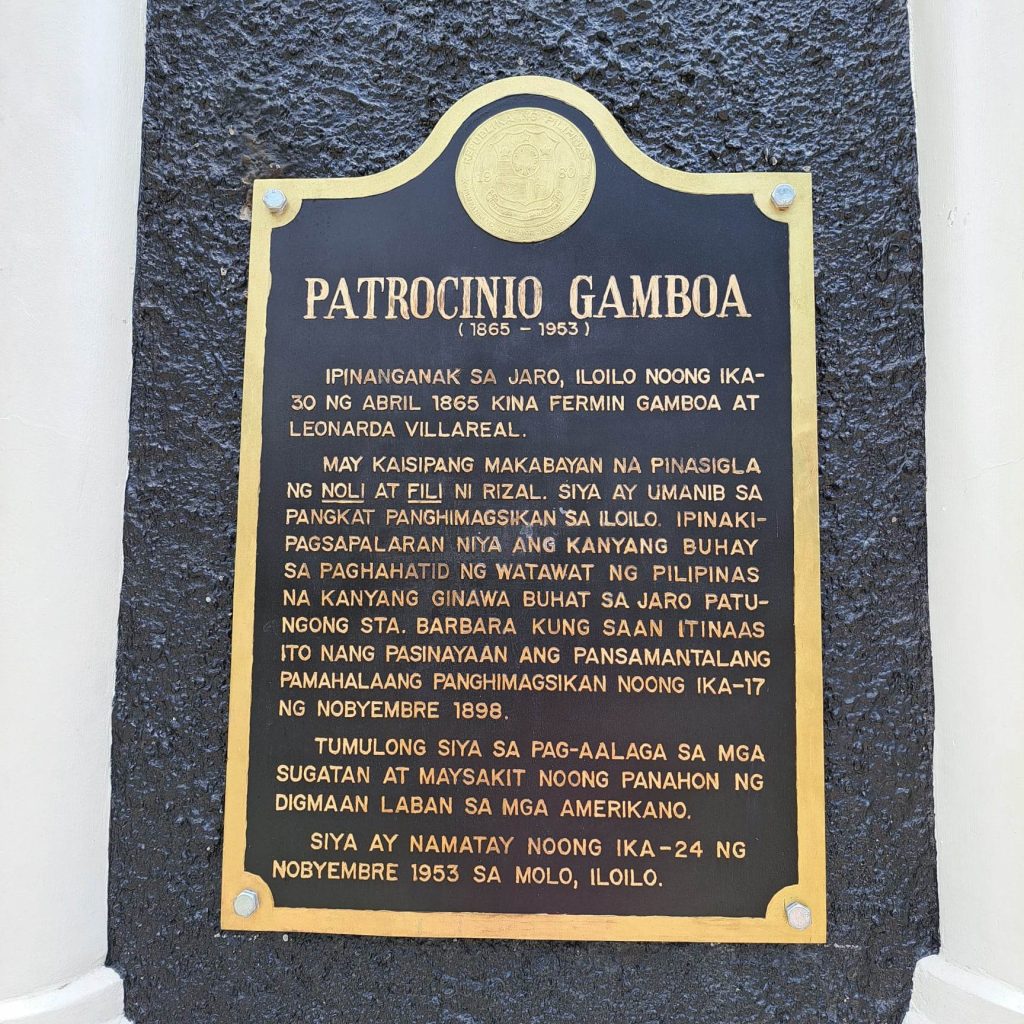
Who is Patrocinio Gamboa?
Patrocinio Gamboa is a Jareña (hails from Jaro, Iloilo City). She is famous for her nickname Tià Patron (Auntie Patron). She was born on April 30, 1865, in Jaro, Iloilo. Her parents are Fermin Gamboa and Leonarda Villareal. She belonged to rich and well-known families in Jaro and Iloilo.
She drew her inspiration from the lives, labors, and sacrifices of Rizal, Marcelo H. del Pilar, Graciano Lopez Jaena, and other Filipino Propagandists. She was an avid reader of their works but only in secret as it was a prohibited act during the time of the Spaniards.
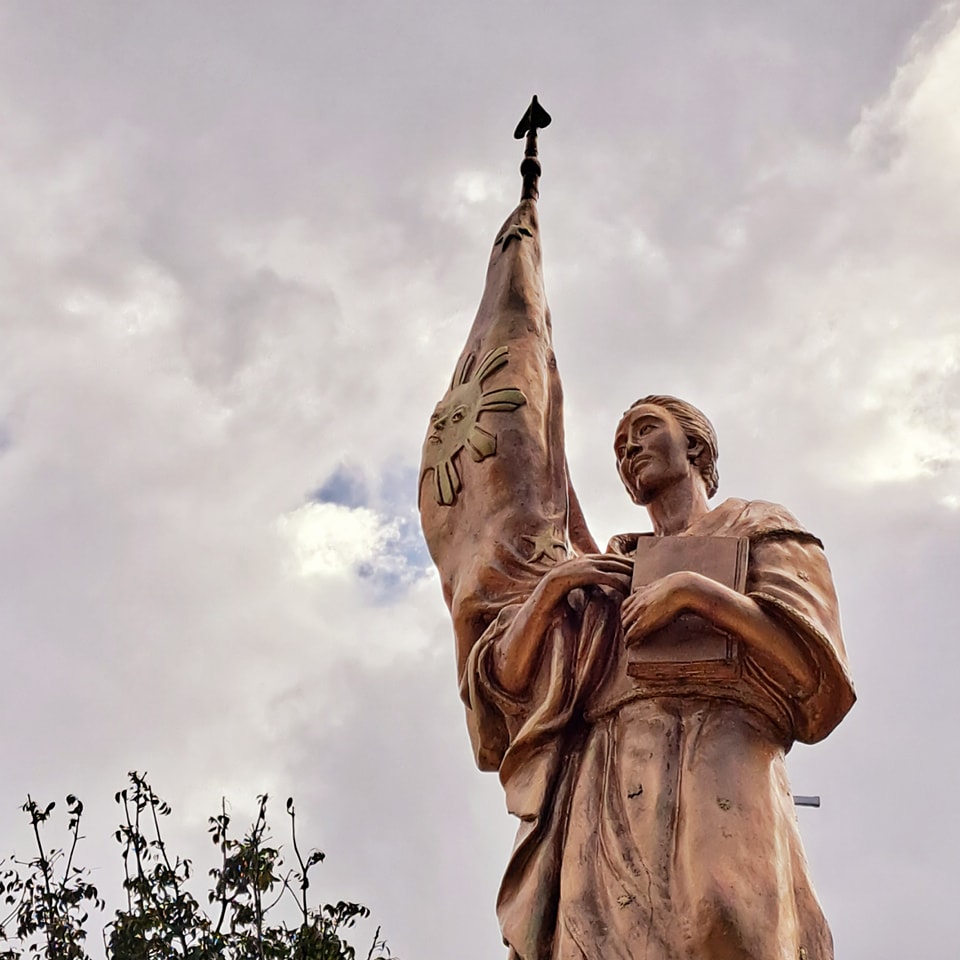
She made the flag (with the help of women of Jaro) that was exactly patterned to what Mrs. Marcela Agoncillo designed for the Philippine Revolutionary Government in Luzon.
The Philippine Revolutionary Government in Visayas started on November 17, 1898. On this day, the first Philippine flag, which was made by Tià Patron, was raised on a thorny bamboo pole in Santa Barbara plaza, just in front of their casa municipal.
The historic flag-raising was witnessed by attendees of the Revolutionary Government from all walks of life. There were thousands of cheering Filipinos from the coastal, central, and hinterlands regions of Panay.
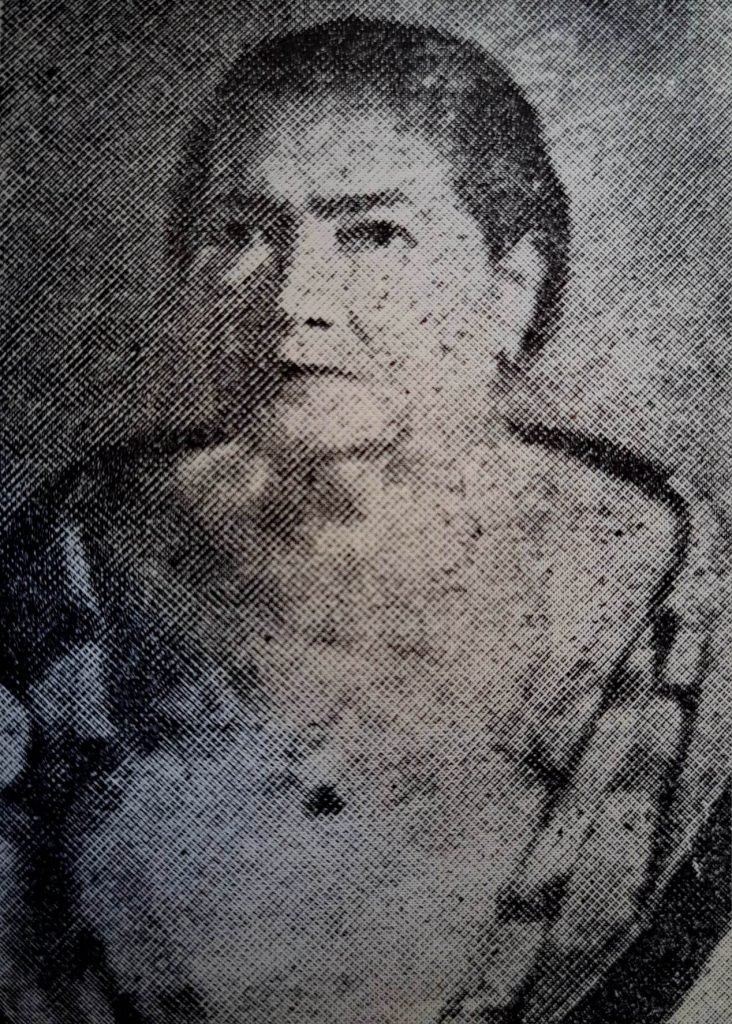
But the journey of the flag to reach the town of Sta. Barbara was not that easy. The flag and the saber of General Martin Delgado which was sent by General Emilio Aguinaldo and received by Roque Lopez are both in Jaro. They need to send these items on time for the inauguration of the Revolutionary Government which will take place in Sta. Barbara.
Jaro to Sta. Barbara is around 27 kilometers. Modern maps would say that it will only take around 27 mins to drive navigating the new routes of the present time. But during the revolution, they don’t have the cars and transport system we have right now. They only have tartanilla (tartanilya) or kalesa – a carriage that has two wheels and is drawn by a horse. It was their only public and private transportation during their times.
The mission was to deliver the flag and saber to Sta. Barbara. It sounded easy but no male member who is in the force will dare to take on the task. The roads going to Sta. Barbara was heavily guarded by Cazadores. They are the guards who are armed and hunting for revolutionaries. To refuse a mission to carry the contrabands is a valid reason.
Everyone thought that it would be not possible to transport the flag and saber but Tià Patron volunteered to do it. She made a place. In her plan, she needed a man who could pose as her husband, a tartanilla, and a bundle of bungalon grass. Lieutenant Honorio Solinap agreed to help Tià Patron in the mission.
Along their way, they pretended to be a quarrelsome married couple who needs to meet for an urgent appointment. To make it more realistic, Tià Patron cusses and curses her “husband” Lieutenant Honorio Solinap. She would even bite and hit him to make their drama more intense and to cast doubts from Cazadores away.
Genius as she may be, the Cazadores believed in their act, and let them pass without checking their tartanilla and without frisking their clothing. Cazadores are even laughing at them thinking it was just another case of a domineering wife and a submissive spouse.
Little that they know, the saber was hidden under the bungalon grass inside the tartanilla and the flag is securely wrapped in Tia Patron’s waist, carefully hidden under her clothes.
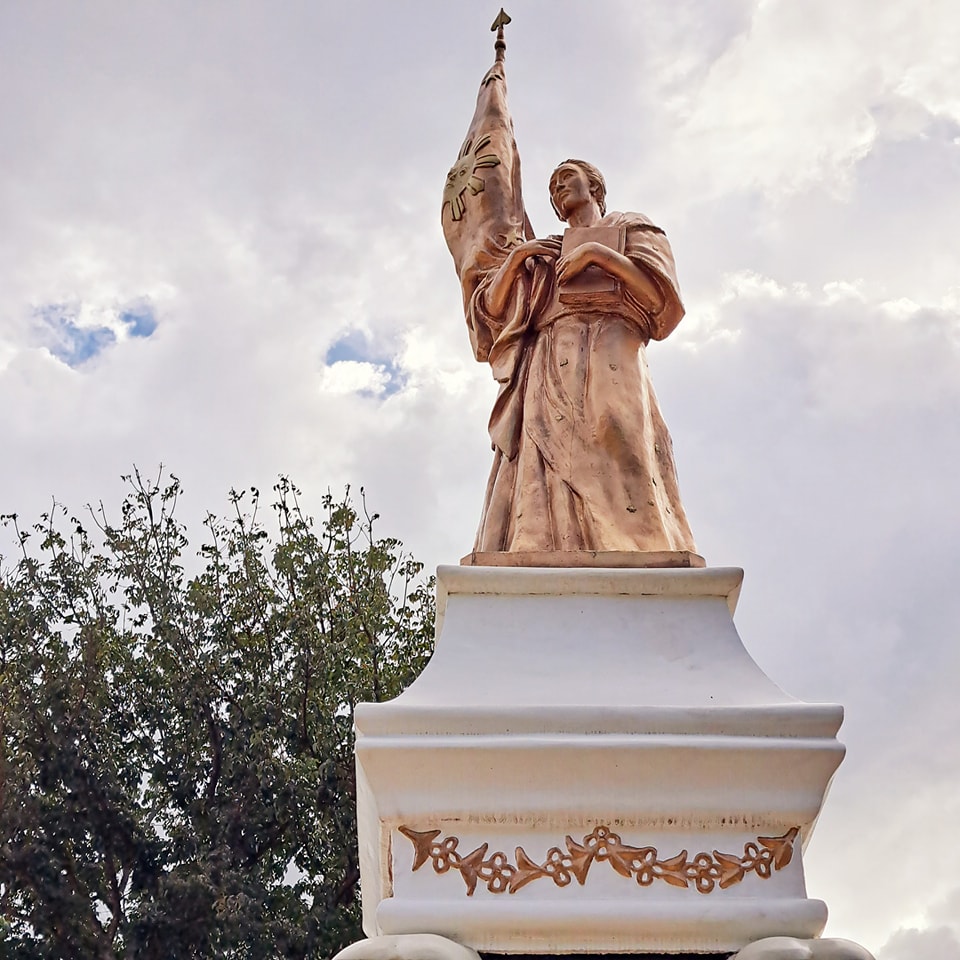
In March 1898, she joined the revolutionary movement in Iloilo. She was active in attending as a leader in secret conclaves of the Comite Conspirador in Molo until she became a participant in the Revolutionary Government in Santa Barbara. She was able to raise funds and even convinced the Chinese of Iloilo to contribute money for the Filipino revolutionaries to be used to procure food, medicines, and arms.
She is also hands-on in taking care of the sick and wounded. Throughout the revolution, the tactful and well-mannered Tia Patron worked and risked her life for the country and her fellowmen.
Read also: List of Iloilo City Cultural Heritage Sites
